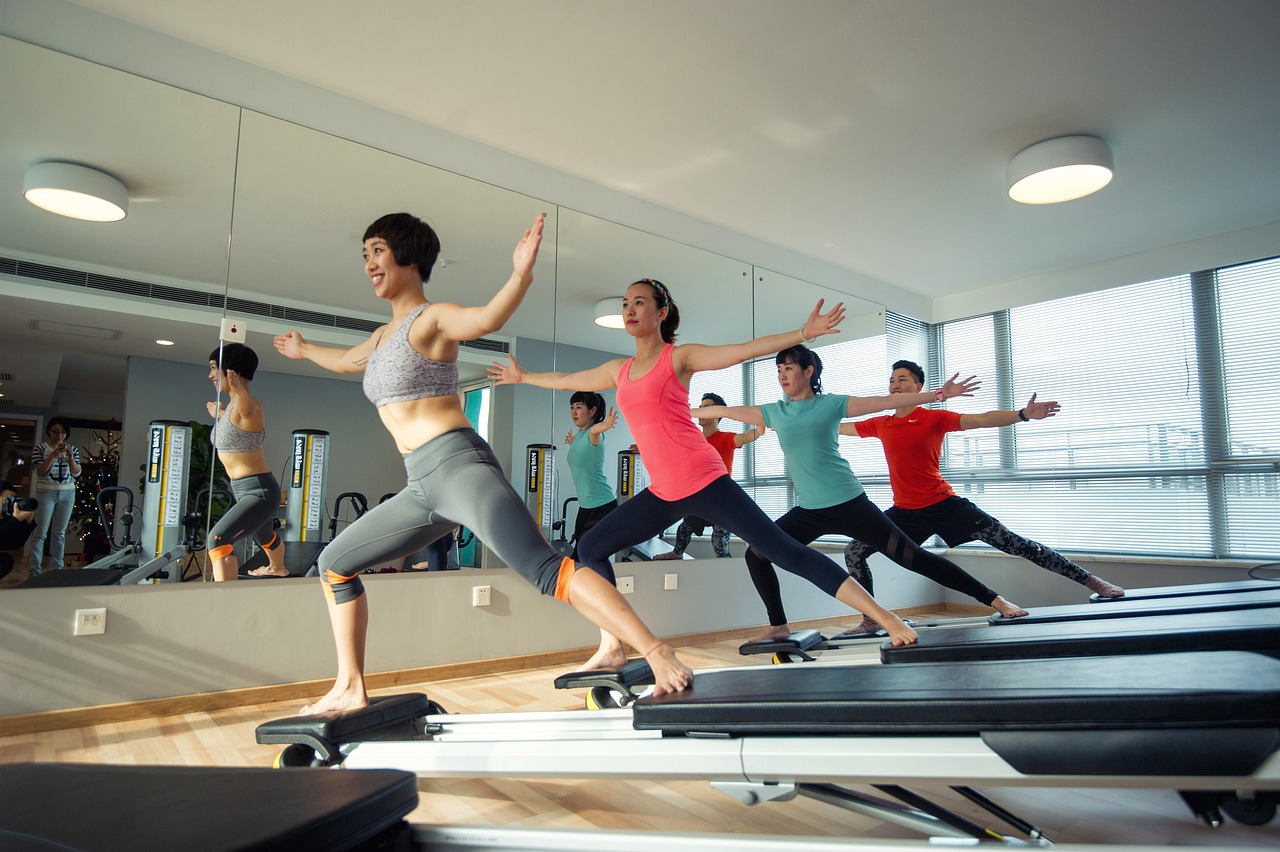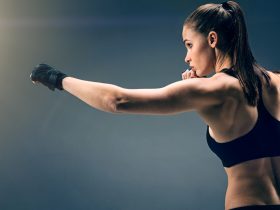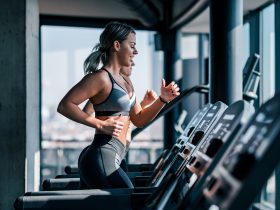Pilates, often endorsed by celebrities for its ability to sculpt long and lean bodies, has gained widespread recognition.
However, it’s far more than just a pursuit of achieving a slender physique, and it certainly isn’t limited to women.
Pilates is a practice that welcomes everyone, irrespective of gender, age, ethnicity, size, fitness level, or physical capabilities.
The world of Pilates encompasses a rich repertoire of exercises, spanning both mat-based and specialized equipment routines, with over 600 exercises and variations to choose from.
It caters to a diverse audience, from individuals leading sedentary lifestyles to weekend warriors, pregnant women, those in rehabilitation, individuals managing anxiety, and even professional athletes.
Research has demonstrated that Pilates can significantly enhance the quality of life. It has been particularly effective in reducing back pain and has shown positive effects on conditions such as depression.
Commonly integrated into cross-training regimens, Pilates is frequently recommended by medical professionals to promote overall health, injury prevention, and rehabilitation.
But what exactly is Pilates?
Originally named “Contrology,” Pilates represents a comprehensive exercise system aimed at enhancing daily life.
While the core is indeed emphasized, it is not the sole objective. The ultimate goal is to utilize this core strength to cultivate functional and sustainable movement patterns throughout the body.
Joseph Pilates, the founder, crafted these exercises in the early 20th century. They synchronize movement and breath to engage not only the major muscle groups but also the smaller, deeper stabilizing muscles within the body.
Pilates encourages the overall alignment of the body’s structure and provides support to its joints. Although it may appear deceptively simple, when executed with proper form, Pilates can be both challenging and remarkably effective.
Pilates is a gentle, low-impact exercise method that nurtures optimal strength by achieving muscular equilibrium and refining neuromuscular coordination.
The strength developed through consistent Pilates practice is supple, harmoniously blending strength, flexibility, and mobility. It empowers you to navigate daily activities with greater ease, enhanced vitality, reduced discomfort, and improved breath control.
Discover the 19 Remarkable Benefits of Pilates
1. Amplified Core Strength
Pilates is renowned for its unwavering focus on the core, the body’s epicenter from which all movements originate. This encompasses the muscles encircling the trunk, which, when nurtured and flexible, provide invaluable support and stability.
Pilates stands out in augmenting core strength and functionality. A robust core plays a pivotal role in mitigating back and hip discomfort, reducing pelvic floor issues, and serving as the epicenter for dynamic movements, thus earning it the nickname “the powerhouse.”
2. Enhanced Posture
Your parents had a point when they urged you to straighten up and sit with proper posture. Enhanced posture can be the distinction between feeble, imbalanced muscles, headaches, shoulder or back pain, and assuming an effortless, erect posture while sitting or standing.
Pilates zeroes in on comprehensive body alignment, the optimal range of motion for joints, and the equilibrium of opposing muscle groups. It corrects posture by heightening your consciousness of alignment and fortifying overlooked postural muscles.
3. Alleviated Back Pain
Pilates directs its attention to the profound abdominal muscles and the pelvic floor, enabling both contraction and relaxation—a clear indication of robustness. These muscles function like a corset, lifting and supporting organs while safeguarding and stabilizing the back.
4. Injury Prevention
Pilates harmonizes the body’s muscles, averting extremes of laxity or tension. Muscles that are excessively slack or taut can heighten the vulnerability to injury.
Pilates prioritizes the cultivation of dynamic strength, rendering you better equipped to uphold and stabilize your joints during movement. Research has indicated that Pilates effectively curtails the risk of sports-related injuries.
5. Boosted Vitality
By prioritizing breath, Pilates enhances cardiorespiratory capacity (11, 12). This sparks the release of feel-good hormones, elevates oxygen circulation, and augments blood flow.
Pilates accomplishes all this while, thanks to its gentle nature, seldom resulting in fatigue. Instead, it infuses you with a surge of vitality.
6. Heightened Body Awareness
Pilates serves as a mind-body discipline that enriches proprioception, the awareness of one’s body. The introspection and the ability to concentrate on bodily sensations heighten your sensitivity to comfort, discomfort, emotions, and your surroundings.
Elevated proprioception empowers the body to react adeptly to stimuli, thereby averting injuries and tumbles. Improved body awareness might even assist in curbing overeating since you’ll be attuned to your body’s hunger cues.
7. Reduced Stress
Building upon the advantages of body awareness, Pilates’ internal focus and breath utilization can regulate the nervous system. This shift can guide you away from the fight-or-flight mode, reducing cortisol levels, and gradually diminishing stress.
8. Alleviates Menstrual Pain
Dysmenorrhea, characterized by painful menstrual periods, can be incredibly distressing. If you’ve encountered it, you understand its debilitating nature. Existing research indicates that Pilates may offer relief from menstrual pain.
9. Enhances Flexibility and Mobility
Let’s start by distinguishing between flexibility and mobility.
Flexibility refers to the extent of passive muscle stretch, while mobility pertains to the joint range of motion. Superior mobility necessitates flexibility alongside strength.
Favoring mobility over mere flexibility is vital since pure flexibility isn’t functionally beneficial. Achieving an optimal range of motion demands a fusion of strength and flexibility.
Pilates is characterized by seamless transitions between deliberate, controlled movements. Rather than segregating stretching from strengthening, most Pilates exercises intertwine the two, fostering strength, flexibility, and mobility.
10. Enhances Balance
Balance holds significance at every age and is integral for everyday activities requiring coordination, such as walking, or movements with nonlinear patterns, such as reaching and twisting.
Pilates enhances balance and coordination not solely through core reinforcement but also by focusing on alignment and holistic body engagement.
11. Bolsters Immunity
Studies reveal that Pilates contributes to improved immune system functionality, particularly among older individuals.
Although much of the research focuses on older adults, these findings imply that individuals of all ages may experience enhanced immunity through Pilates, largely attributable to enhanced circulation.
Enhanced circulation correlates with improved immune system performance. A robust immune system relies on the unimpeded flow of blood and lymph—both of which Pilates promotes.
12. Enhances Cognitive Function
Studies have demonstrated that Pilates training can significantly enhance cognitive function. Various markers were examined, including the development of new neurons, increased blood flow to the brain, elevated neurotransmitter levels, and the longevity of neurons responsible for learning, memory, and executive thinking.
13. Boosts Motivation
In addition to cognitive improvements, a study found that Pilates effectively boosted motivation among students. Another study delved into the motivation driving Pilates practitioners and found that they are more intrinsically motivated rather than seeking external validation.
14. Elevates Your Sex Life
Pilates can contribute to a more enjoyable intimate experience for multiple reasons. Firstly, it enhances endurance, strength, mobility, and flexibility, allowing for more extended and comfortable positioning. Additionally, Pilates effectively strengthens and enhances the function of the pelvic floor, which has a positive correlation with heightened sexual pleasure.
15. Enhances Sports Performance
Whether you’re a professional athlete or a weekend warrior, Pilates can elevate your sports performance. By balancing the body, strengthening muscles, increasing mobility, and lengthening tight areas, Pilates improves reaction time and helps prevent injuries.
Research conducted on athletes from various sports has demonstrated improvements in speed, muscle mass, trunk strength, core stability, vertical jump, and kicking flexibility.
16. Strengthens Bones
Our increasingly sedentary lifestyle with prolonged sitting can negatively impact bone density, making us vulnerable to conditions like osteoporosis and osteoarthritis. Pilates has been shown to increase bone density effectively, relieving pain, and enhancing quality of life.
17. Uplifts Mood
Exercise, in general, has the magical ability to release endorphins. Pilates, in particular, has been studied for its mood-boosting benefits, resulting in reduced anxiety, fatigue, depressive symptoms, and the release of negative thought patterns.
18. Improves Sleep Quality
Pilates has shown promise in improving sleep quality, especially among individuals under 40. Postpartum women, in particular, reported enhanced sleep when incorporating Pilates into their weekly routine.
19. Encourages Playfulness
Last but not least, many individuals find Pilates to be a playful departure from other workouts. Where else can you “roll like a ball,” mimic a “seal,” hang like a “monkey,” or simply experiment with new positions? Embracing a sense of playfulness can contribute positively to your physical health in various ways.
Furthermore, the most effective exercise routines are the ones you genuinely enjoy because they motivate you to stay active.
Advantages of the Pilates Reformer
The Pilates reformer, second only to mat exercises in popularity, stands as the most widely used piece of Pilates equipment. This sleek apparatus comprises a pulley system featuring a sliding carriage and springs of varying tension levels.
The reformer proves to be a versatile machine, offering a wide range of exercises suitable for beginners, engaging for dedicated fitness enthusiasts, and beneficial for individuals in post-injury recovery.
Efficiently, the reformer aids in building muscular endurance without subjecting the joints to weight-bearing stress, making it a comfortable choice. A 2016 study even concluded that Pilates equipment surpasses mat exercises in terms of injury rehabilitation.
Advantages of Pilates During Pregnancy
Adapted Pilates provides support for the constantly changing body during pregnancy. It helps relieve the strain caused by a growing baby by targeting the muscles of the buttocks, core, and pelvic floor.
Certain prenatal Pilates exercises can assist in managing diastasis recti, a condition characterized by the separation of abdominal muscles, which is common during pregnancy, and aid in its recovery after childbirth.
Prenatal Pilates, with its emphasis on breath control, body awareness, and strengthening advantages, can help you prepare both mentally and physically for labor and delivery.
Advantages of Pilates for Weight Loss
Pilates can transform your body shape by focusing on toning and enhancing alignment and posture. It’s renowned for its inside-out approach, which can make you appear taller and leaner.
Although Pilates can make you break a sweat, it isn’t the most efficient method for weight loss on its own. Achieving weight loss involves factors like getting sufficient sleep, reducing stress, and, most importantly, creating a calorie deficit.
Pilates aids in weight loss by strengthening the mind-body connection. It helps regulate the nervous system, reducing stress levels, increasing body awareness, and boosting motivation, all of which prepare you for other cardio-based activities.
















Find Us on Socials